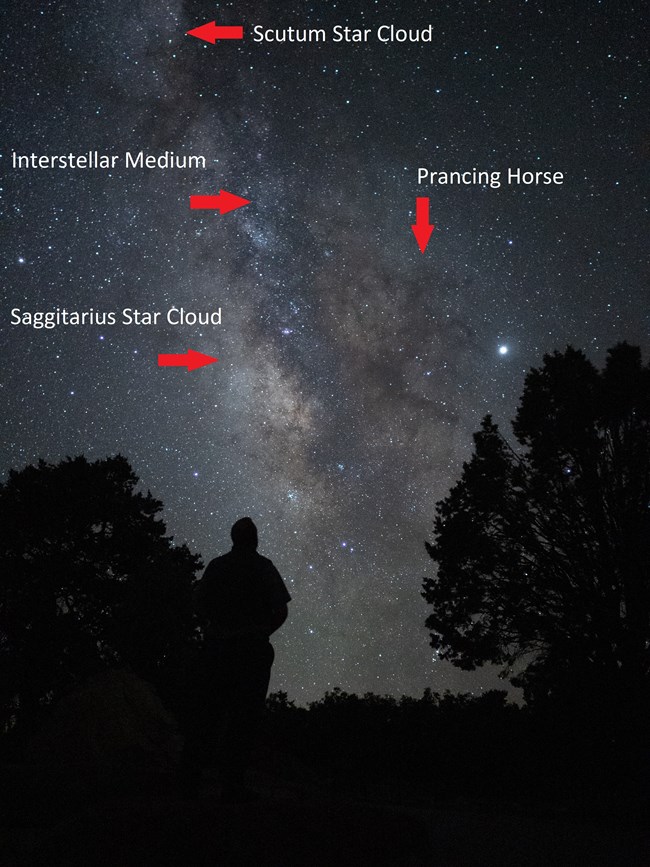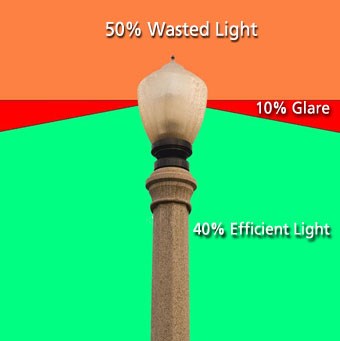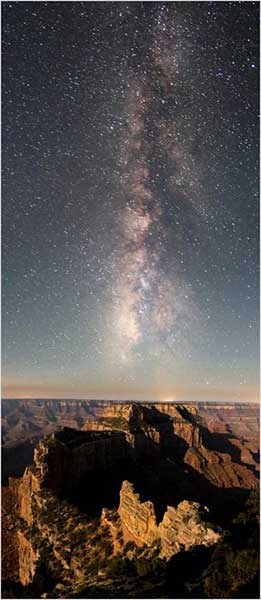
NPS Photo by Dan Pawlak “Why did not somebody teach me the constellations, and make me at home in the starry heavens,
which are always overhead, and which I don't half know to this day?” – Thomas Carlyle
Imagine gazing up at the sky on a moonless summer night and having the center of the Milky Way Galaxy cast your shadow upon the earth. The jeweled planets Jupiter, Mars, and Saturn wander along the ecliptic plane, nestled in the ancient constellations of the zodiac, which has inspired art, science, and religion for millennia. You stand humbled by the brilliance of thousands of stars and become connected to countless civilizations through the stories written in the night sky.
Imagine the psychological differences this would make in our lives if we could commune with nights like these whenever we needed. Unfortunately, for nearly 80% of Americans today, the Milky Way is no longer visible. Light pollution, created by the inefficient use of outdoor lighting, will block the view of the Milky Way for 4 out 5 children born today if this trend continues. Thankfully, there is hope to preserve the last sanctuaries of our night skies and to return to an unimpaired view of the cosmos that our ancestors experienced.
What is a natural lightscape?A natural lightscape is a sky that is unimpaired by artificial lighting. In 2001, John E. Bortle created a useful 9 class scale, called the Bortle Scale that gives us a foundation for what a pristine night sky should look like versus a severely light polluted night sky. Class 1 night skies are the most natural skies and Class 9 are affected urban areas in large cities. The majority of populated areas in the United States have lost pristine views of the night sky that have been inspiring us since the dawn of civilization. At most, we see a couple prominent stars that make up a fragmented constellation. Perhaps we see a planet. But within light polluted areas, the full glory of the night sky is mostly lost.

Here we see with our naked eye parts of the galaxy once familiar to our ancestors: the Cygnus Dark Rift, the Northern Coal Sack, and Prancing Horse.The Scutum Star Cloud and Sagittarius Star Cloud illuminate the center of the galaxy. Other abstract sources of celestial light like the gegenschein and the zodiacal band are visible. An abundance of star clusters, nebulae, galaxies, and unimpaired views of seasonal meteor showers are what define natural lightscapes. Yet these celestial objects are becoming increasingly unfamiliar to us simply because they are disappearing from our evening experience. What is light pollution?Light pollution is defined as excessive, misdirected, or obtrusive artificial light. This definition applies to unwanted light in your own community as well as the night sky. Light that obtrusively shines upon an area, such as your property, is known as light trespass. The primary cause of light pollution is inefficient use of outdoor lighting.
We can see these domes from many miles away and they have a profoundly negative effect on our view of the cosmos. The remaining 10% of that wasted light shines directly in to our line of sight producing glare which destroys our ability to see safely at night. Not only does light pollution dissolve our cultural connections and hinder our scientific explorations of the night sky, it also has a negative impact on wildlife. Many nocturnal animals that rely on the natural darkness of the night to hunt or to navigate become confused from the obtrusive skyglow of artificial light. Their instinctive pursuit of this false light leads them on an unnatural course which often leads to death.
Light pollution also takes a toll on our finite resources. It is estimated that up to 35% of our total outdoor lighting in the United States is completely wasted in to the atmosphere. This means that 35% of the resources we use to create that electricity is completely wasted. This translates to about 3 billion dollars a year in resources that are wasted creating skyglow and light pollution. We have seen a dramatic increase in light pollution over the last few decades. Many people have watched the Milky Way disappear over their homes as growing domes of unwanted light trespass over the sky like persistent, incoming tides. Thankfully, unlike many other forms of irreparable pollution, light pollution is 100% fixable. It cleans up at literally the speed of light! 
Graphic credit: Falchi et al., Science Advances, including Dan Duriscoe/NPS; Bob Meadows/NPS; Jakob Grothe/NPS contractor, and Matthew Price/CIRES and CU-Boulder What can we do about light pollution?

What is an International Dark Sky Park?National Parks are some of the last remaining sanctuaries for pristine night skies. The International Dark Sky Association certifies a park as an International Dark Sky Park if the park retrofits the lights within its boundaries to be night sky friendly, educates visitors about the values of the night sky, and inspires the world to address the problem of light pollution within their own communities.

The methods used by the Night Sky Team to measure light pollution around National Parks have been effective in understanding the threats that our natural lightscapes face. The data collected by the Night Sky Team within a given National Park is important for the determination of International Dark Sky Park status. Download the 2007 Night Sky Team Report of Grand Canyon National Park (868 kb PDF)
Download the January 2016 International Dark Sky Park Nomination Package - Grand Canyon National Park (6 MB PDF) CBS Report: "Grand Canyon offers starry views free of light pollution (YouTube)" Grand Canyon National Park Dark Skies Program
Grand Canyon National Park continues to build a robust Dark Skies Program, which includes improvements to the park's lighting and a diverse range of educational outreach. Grand Canyon National Park's certification as an International Dark Sky Park. Grand Canyon Star Party Free Park Ranger Night Sky Programs Astronomer in Residence Program Astronomy Volunteers Program Night Spoken Video Series Learn how you can help Grand Canyon night skies by visiting our non-profit partner Grand Canyon Conservancy. For more information about night skies and light pollution: NPS Natural Sounds and Night Skies Division International Dark Sky Association How to Stargaze at the Grand CanyonBecause of the park's efforts to reduce its light pollution, practically anywhere in the park is a great place to stargaze. That said, there are tips you can follow to maximize your stargazing experience:
Visit our keyboard shortcuts docs for details
Experience the mystery and wonder of Grand Canyon National Park's night sky with Astronomer Tyler Nordgren and Park Ranger Rader Lane. Explore the beauty of the night sky and learn what you can do to help preserve it. |
Last updated: July 24, 2023
